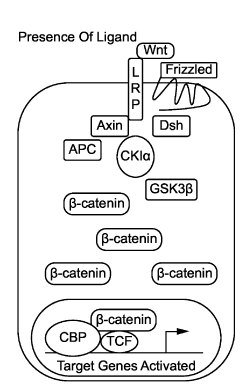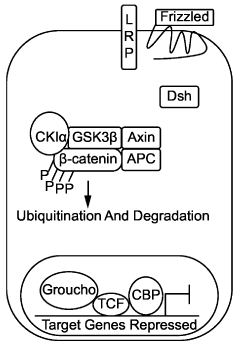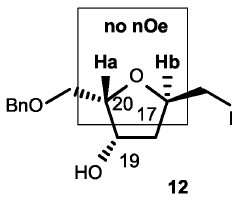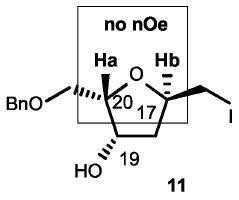Research on supramolecular modification techniques - Eureka
OCT 8, 20244 MIN READ
Generate Your Technical Report in Patsnap Eureka
AI-Powered Innovation Solution Platform for R&D
Supramolecular Modification Background and Objectives
The primary objective is to explore the current landscape and future potential of supramolecular modification techniques. This field has witnessed significant advancements in recent years, driven by the need for tailored materials with enhanced properties and functionalities.
Supramolecular modification techniques involve the precise manipulation of molecular interactions and assemblies, enabling the creation of novel materials with unique characteristics. These techniques leverage non-covalent interactions, such as hydrogen bonding, π-π stacking, and electrostatic forces, to control the organization and behavior of molecular systems. By fine-tuning these interactions, researchers can engineer materials with desired properties, including self-assembly, stimuli-responsiveness, and dynamic adaptability.
Supramolecular modification techniques involve the precise manipulation of molecular interactions and assemblies, enabling the creation of novel materials with unique characteristics. These techniques leverage non-covalent interactions, such as hydrogen bonding, π-π stacking, and electrostatic forces, to control the organization and behavior of molecular systems. By fine-tuning these interactions, researchers can engineer materials with desired properties, including self-assembly, stimuli-responsiveness, and dynamic adaptability.
Market Demand for Supramolecular Modified Materials
- Growing Demand
Supramolecular modified materials are witnessing a surge in demand across various industries due to their unique properties and versatility. Key applications include advanced coatings, drug delivery systems, and functional materials. - Market Drivers
The rising need for sustainable and eco-friendly materials, coupled with the demand for high-performance materials in sectors like electronics, healthcare, and energy, is fueling the growth of this market. - Emerging Applications
Supramolecular modification techniques are enabling the development of smart materials with tunable properties, responsive surfaces, and self-healing capabilities, opening up new avenues for innovation. - Market Segmentation
The market can be segmented based on application areas, such as coatings, biomaterials, electronics, and energy storage, with each segment exhibiting unique growth patterns and market dynamics. - Regional Landscape
North America and Europe currently dominate the market, driven by robust research and development activities. However, Asia-Pacific is expected to witness significant growth due to increasing investments and technological advancements.
Current State and Challenges in Supramolecular Modification
- Current Challenges
Lack of precise control over molecular self-assembly processes, leading to difficulties in achieving desired structures and properties. Challenges in predicting and modeling complex supramolecular interactions. - Technical Limitations
Limited understanding of non-covalent interactions and their interplay with molecular structure. Difficulties in characterizing and visualizing supramolecular assemblies at the molecular level. - Scalability Issues
Challenges in scaling up supramolecular modification techniques for industrial applications, while maintaining control over the self-assembly process and product quality. - Environmental Factors
Sensitivity of supramolecular systems to external factors such as temperature, pH, and solvent conditions, complicating the design and implementation of modification techniques. - Geographical Distribution
Research and development in supramolecular modification techniques are distributed globally, with major contributions from academic and industrial research centers in North America, Europe, and Asia.
Evolution of Supramolecular Modification Techniques

Existing Supramolecular Modification Solutions
01 Structured Supramolecular Materials
These materials possess unique supramolecular structures like caged, helical, or porous frameworks, exhibiting properties like luminescence, photocatalytic activity, or adsorption capabilities. They are prepared through self-assembly or coordination of various building blocks.- Structured Supramolecular Materials: These materials possess unique supramolecular structures like caged, helical, or porous frameworks, exhibiting properties such as luminescence, photocatalytic activity, or adsorption capabilities. They are prepared through self-assembly or coordination of various building blocks.
- Supramolecular Polymers and Composites: These involve incorporating supramolecular units into polymeric structures or combining them with materials like carbon nanotubes or graphene, resulting in unique properties and functionalities.
- Energy and Environmental Applications: These materials find applications in areas like energy storage (e.g., lithium-sulfur batteries), catalysis, and environmental remediation (e.g., pollutant degradation or adsorption), designed with specific functionalities.
- Biomedical and Sensing Applications: These materials are designed for biomedical applications like drug delivery, tissue engineering, or biosensing, exhibiting properties like biocompatibility, stimuli-responsiveness, or molecular recognition capabilities.
- Material Modification and Functionalization: Supramolecular chemistry principles are employed to modify or functionalize existing materials like polymers, surfaces, or proteins, imparting new properties or functionalities through incorporation of supramolecular units or formation of assemblies.
02 Supramolecular Polymers and Composites
These involve incorporating supramolecular units into polymeric structures or combining them with materials like carbon nanotubes or graphene, resulting in unique properties and functionalities.03 Energy and Environmental Applications
These materials find applications in areas like energy storage (e.g., lithium-sulfur batteries), catalysis, and environmental remediation (e.g., pollutant degradation or adsorption), designed with specific functionalities.04 Biomedical and Drug Delivery Applications
These materials are designed for biomedical applications like drug delivery, tissue engineering, or biosensing, involving supramolecular assemblies, capsules, or bioconjugates with specific functionalities.05 Preparation and Modification Methods
These involve various techniques for synthesizing, modifying, or functionalizing supramolecular materials, such as molecular templating, post-functionalization, or radiofrequency treatment, to achieve desired properties or structures.
Key Players in Supramolecular Chemistry
The supramolecular modification techniques market is emerging, with significant contributions from academic institutions like MIT, Harvard, and Peking University, indicating strong research foundations. Companies like ModernaTX, Inc., BioAtla, Inc., and Lantern Pharma, Inc. are involved, suggesting early commercial interest. The technology is nascent, with ongoing research and initial applications, indicating potential for growth and innovation.
ModernaTX, Inc.
Technical Solution:
Massachusetts Institute of Technology
Technical Solution: MIT focuses on developing novel supramolecular structures for drug delivery and materials science, using advanced computational models.
Strength: Cutting-edge research and strong computational capabilities. Weakness: High cost and complexity.
Core Innovations in Supramolecular Modification
Biologically active pharmaceutical composition targeting WNT receptors
PatentInactiveIN202041025797A
Innovation
- Synthesis of a novel complex furan-based macrocyclic compound
- Screening of macrocyclic compounds as potential Wnt/b-catenin inhibitors
- Modulation of nuclear complex dealing with multiple nuclear protein-protein interactions / DNA-protein interactions
Regulatory and Environmental Considerations
Supramolecular modification techniques involve the use of non-covalent interactions to modify the properties and behavior of materials at the molecular level. These techniques have gained significant attention due to their potential applications in various fields, including drug delivery, sensing, and catalysis. The market demand for supramolecular modification is driven by the need for advanced functional materials with tailored properties. Key challenges include controlling the self-assembly process, achieving desired structural precision, and improving stability. Potential innovation directions involve exploring new supramolecular motifs, incorporating stimuli-responsive elements, and integrating supramolecular systems with other emerging technologies like nanomaterials and biomolecules.
the structure of the environmentally friendly knitted fabric provided by the present invention; figure 2 Flow chart of the yarn wrapping machine for environmentally friendly knitted fabrics and storage devices; image 3 Is the parameter map of the yarn covering machine
Login to View More Applications of Supramolecular Modified Materials
Supramolecular modification techniques involve the use of non-covalent interactions to modify the properties and behavior of materials at the molecular level. These techniques have gained significant attention due to their potential applications in various fields, including drug delivery, sensing, and advanced materials. The market demand for supramolecular modification is driven by the need for innovative solutions in areas such as biomedical, environmental, and energy sectors. Key players in this field include research institutions, pharmaceutical companies, and materials science firms. Current solutions involve the use of host-guest interactions, self-assembly processes, and dynamic covalent chemistry. Potential future directions include the development of stimuli-responsive systems, biomimetic materials, and the integration of supramolecular principles with emerging technologies like nanomaterials and 3D printing.
the structure of the environmentally friendly knitted fabric provided by the present invention; figure 2 Flow chart of the yarn wrapping machine for environmentally friendly knitted fabrics and storage devices; image 3 Is the parameter map of the yarn covering machine
Login to View More If you want an in-depth research or a technical report, you can always get what you want in Patsnap Eureka TechResearch . Try now!



